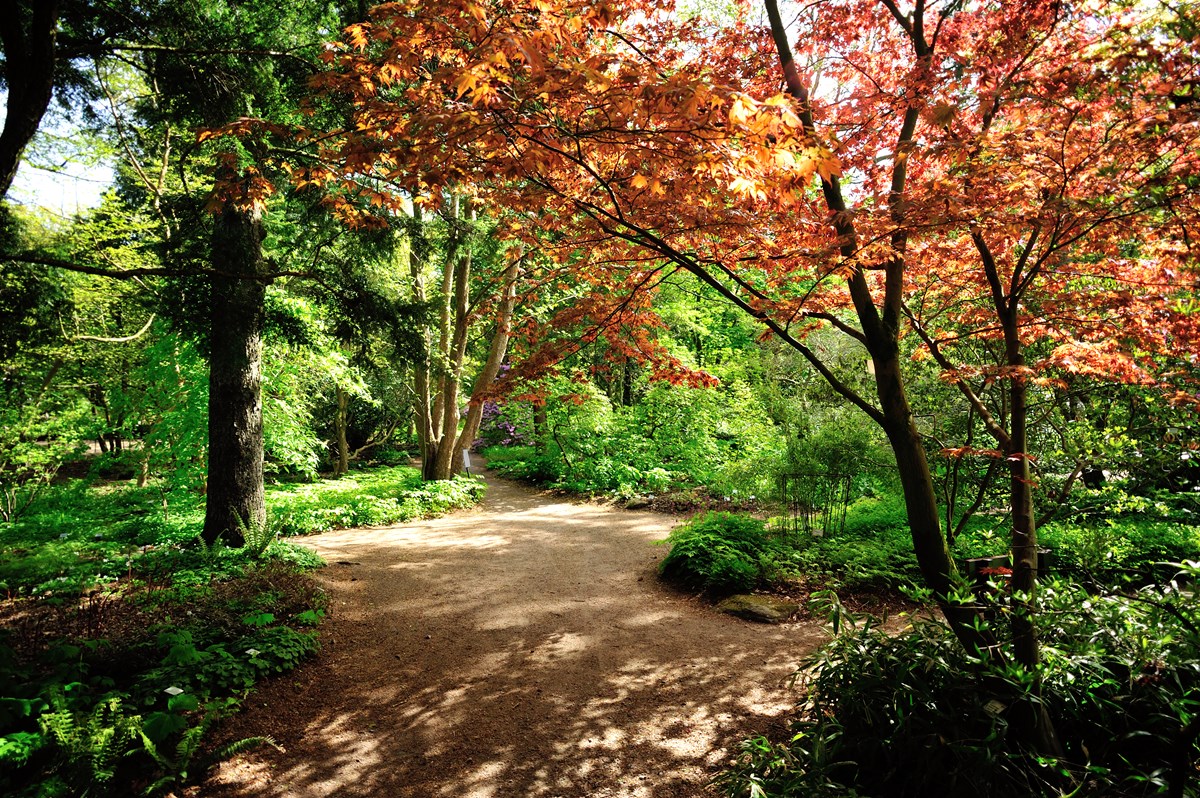Bamboo thickets

Our Bamboo Thickets are rich in different species.
Diversity in the shady forest
Chinese Umbrella bamboo (Fargesia murielae) and Fountain bamboo (Fargesia nitida) dominated originally. They only flower once every hundred years. After flowering, the plant itself dies, but the seeds germinate and a new generation grows up. This happened in our Bamboo Thickets at the end of the 1990s, which is why our stock is quite young. At about the same time, we planted about ten new species. Several of them, for example the Clumping bamboo (Fargesia robusta), seem to thrive here.
Japanese forked viburnum (Viburnum furcatum) is unusual as a cultivated plant. It is a shrub with deep green foliage in summer that turns fiery red in autumn. The Korean yellow wax bells (Kirengeshoma palmata) produce remarkable flowers well into the autumn. The wheel tree (Trochodendron aralioides), a coniferous shrub with small blooms like wheels also thrives here.
Japanese maple (Acer palmatum), full moon maple (A. japonicum) och golden full moon maple (A. shirasawanum 'Aureum') can also be enjoyed in the Bamboo Thickets. They all have pretty, decorative leaves and are a colourful experience in autumn.
Attractions
The garden's oldest handkerchief tree (Davidia involucrata var. vilmoriniana) was planted in the 1950s. It blossoms in late May and early June. The big white bracts round the flowers resemble waving handkerchiefs.
Flame flower (Tropaeolum speciosum) is a climbing plant from South America that blooms from July to October with gorgeous fiery-red flowers.
Japanese Ranzania (Ranzania japonica) is a rare herb that blooms luxuriantly in spring.






